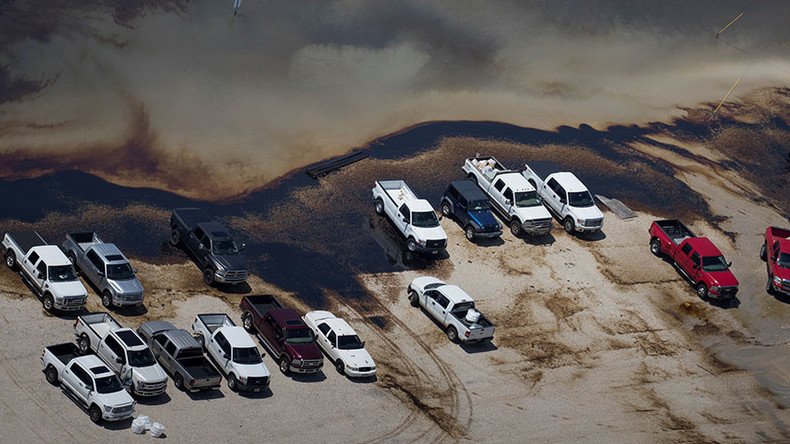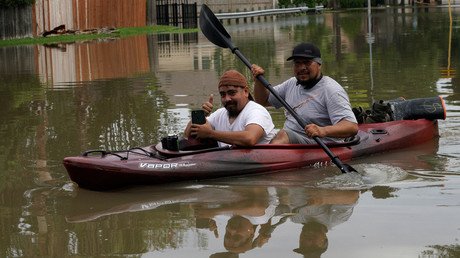Feds working on dozens of chemical spills in Texas

The US Coast Guard and the Environmental Protection Agency are assisting Texas state regulators in cleaning dozens of toxic spills from the vast network of petrochemical plants and refineries in the wake of Hurricane Harvey.
EPA spokeswoman Terri White said it was not possible to provide an estimate for the amount of chemicals spilled.
“Initial reports were based on observation,” White said, according to Reuters. “Some spills were already being cleaned up by the time EPA or other officials arrived to assess them and other had already migrated offsite.”
However, the Coast Guard’s National Response Center tracks reports of oil spills and other chemical releases, which can be filed by corporations or the public.
U.S. Coast Guard, EPA cleaning up a dozen Texas chemical spills after Harvey https://t.co/YLALZFCEhk
— Reuters U.S. News (@ReutersUS) September 11, 2017
Between August 23 and September 3, the duration of the hurricane, callers made 96 reports of oil, chemical or sewage spills across southeast Texas, according to the New York Times.
“This is really just the tip of the iceberg,” said Ilan Levin, the Texas-based associate director of the Environmental Integrity Project, a nonprofit advocacy group.
Among those companies reporting spills were Valero Energy Corp in Houston, Motiva Inc in Port Arthur, and ExxonMobil Corp in Baytown, according to the EPA.
Kinder Morgan spokeswoman Lexey Long said the company reported a spill of 500 barrels of gasoline on August 27. The spill was covered with a foam blanket and a barrier to keep the public away.
“The spill has been fully remediated,” Long told Reuters.
Sewage, chemicals, and massive amounts of debris. Texas faces clean up challenges moving forward. https://t.co/2eNR4qxU8u
— Joshua (@YoshGuenther) August 31, 2017
The EPA and other authorities have warned people affected by the flood that waters could contain bacteria and toxic chemicals, but have said little about the origins or quantities of the substances.
The state’s Commission on Environmental Quality said that at least 80 spills came from inundated sewage and wastewater systems.
“If people are cleaning up and trying to begin the repair of their homes, they may still be encountering contaminated water and potentially getting sick,” Luke Metzger, director of the advocacy group Environment Texas, told the Desert Sun.
Other concerns are the flooding of federal Superfund sites and airborne emissions. Harris County, where Houston is located, hosts more than a dozen current and former toxic waste sites designated under the federal Superfund program.
At least 14 of these sites, contaminated with dioxins, lead, arsenic, benzene or other compounds from industrial activities, were flooded or damaged by Hurricane Harvey.
The EPA said it has assessed 13 Superfund sites and that two would require “additional assessment efforts.” The sites pose serious health risks, and many of these sites were just protected by a tarp covered with rocks.
“With floodwater spreading these poisons to broader communities… there’s fear that more people could get sick, either from direct exposure to the water or even down the road from eating contaminated seafood,” Metzger told the New York Times.
In just four days, Hurricane Harvey dumped more than 40 inches (1,000 mm) of rain on parts of Texas. The resulting floods inundated hundreds of thousands of homes, displacing more than 30,000 people and prompting more than 17,000 rescues.
Over 7,000 people have registered for government assistance, White House homeland security adviser Tom Bossert told reporters on Monday.













